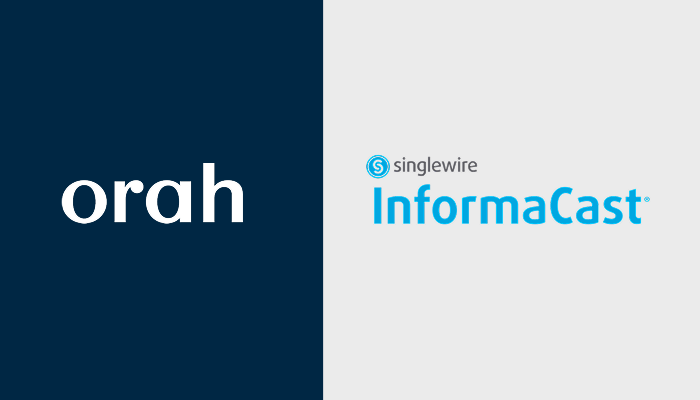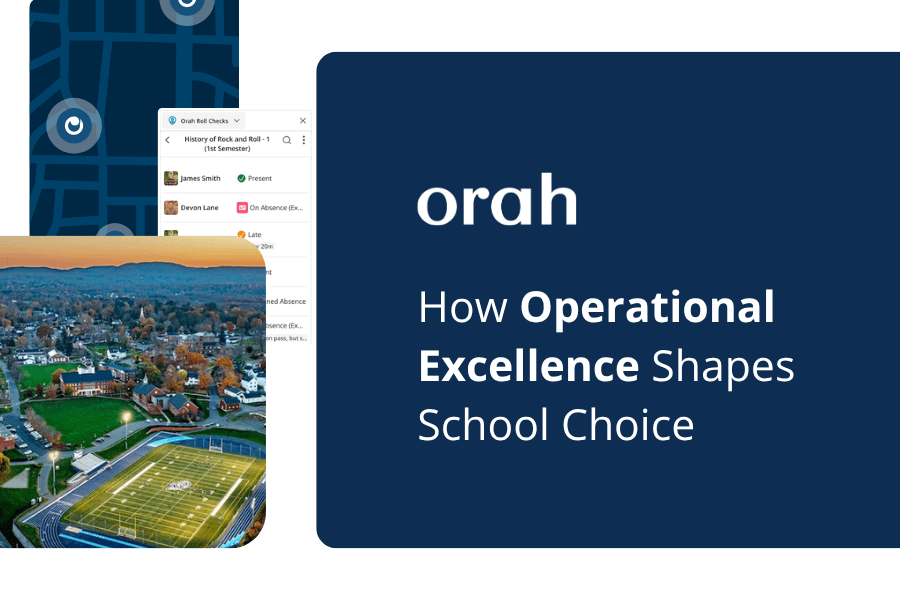Fostering a Data-Driven Culture in Education to Improve the Student Journey
Kavyapriya Sethu
•
October 19, 2021
.png)
Data is all around us in everyday life. And we use the data to make decisions: how can I quickly get from one location to another, what are some best restaurants in the city, what's the weather going to be like over the weekend?
We constantly browse websites, stream music and video, post on social media, and indulge in so much more. It is getting harder and harder to function without the presence of data in our lives. In 2018, 2.5 quintillion bytes of data were created by every person every day – and the pace has only been accelerating since then (Forbes).
Data is in abundance, and it is left to us to transform this data into valuable insights. And the companies who can do just this are the ones creating real value. They are utilizing the insights to optimize their operations and win the hearts of their customers.
Here is an example to consider. Netflix has proven to be a lifesaver, especially during the pandemic when we are scrambling to occupy ourselves with something to do. Netflix runs predictive analysis with their data and creates new blockbuster series that we have come to enjoy, like House of Cards and Arrested Development.
We know powerful insights are possible to solve business problems. Yet, data isn't used to its fullest potential in the education sector. The pandemic has forced students to adjust to a prolonged period of remote learning and disrupting student learning and well-being. As students return back to school, schools need to adopt a data-driven culture now more than ever to improve the student journey.
What is a data-driven culture?
“Most of the world will make decisions by either guessing or using their gut. They will be either lucky or wrong.” – Suhail Doshi, Chief Executive Officer, Mixpanel.
Adopting a data-driven culture empowers every school department to make decisions based on data-derived insights instead of experimenting with mere assumptions. It is a framework that enables you to leverage data-driven insights to identify new opportunities, improve operations and meet your business objectives.
Key industries that tackle real-world problems using data
Here is how data is being used in various industries to optimize performance.
Healthcare
The industry is moving towards using data to understand as much about a patient as possible, detecting warning signs of serious illness as early in their life as possible, and making the course of treatment simple (not to mention inexpensive).
There is a growing demand for wearables like Fitbit, smartwatches, and monitors. They collect patients’ health data continuously and send alerts to a doctor in real-time when something alarming is detected. Apple launched the Apple Heart Study app to monitor irregular heart rhythms, including those from potentially serious heart conditions. They also released Movement Disorder API to measure and record tremors and dyskinetic symptoms for Parkinson’s disease.
Wearable ECG monitors, blood pressure monitors, and biosensors are other common medical devices that store, track, and share relevant data with physicians in order to prevent problems before they could happen.
Retail
We have all shopped on online websites like Amazon. Data analytics is applied at every stage of the retail process, providing us with smart recommendations on the products we are looking to buy. They use data to predict trends, optimize price, and decide how to sell what product to which customers.
Banking and Finance
Data is being increasingly used in the finance sector to monitor stock market trends in real-time and perform trade analytics. Banks use data to mitigate security risks associated with credit card theft or misuse. They also use data to streamline their processes and provide a better experience to their customers.
Communications, Media, and Entertainment
Data like customer search history, how long customers watch videos, how customers respond to trailers, and more are collected and analyzed. Insights can help in gauging audience interest, predicting a content's success, and improving ad targeting.
Government
Governments utilize real-time analytics to track and monitor borders. They also use data to improve the performance of military departments like the navy and airforce.
The government also uses big data analytics and various AI tools for monitoring any suspicious devices and users on the network and preventing cyber attacks.
Now, let's delve a little deeper into what it means for the education sector.
Benefits of adopting a data-driven culture
Collaborate better
After parents, many people at school are in charge of students' education, care, and well-being. These include subject teachers, counselors, nurses, residential staff, to name a few. All of them need to know what's happening outside of their care. Having the ability to see the whole picture can help them do their job better, effectively connect with different departments and decide how to proactively support their students.
Democratize data and reduce dependency
In most schools, the IT department acts as the owner of the data. Users who need access to data have a dependency that can turn into a bottleneck to getting their work done. However, in a data-driven framework, one individual isn't the gatekeeper to the data. Staff can be given role-based permissions and be empowered to use data to make decisions.
Improve student engagement
Insights drawn from data (like tests, grades, assessments, attendance, behavior, demographics, and more) has the potential to help teachers foster good relationships with students and improve the school experience for them.
Teachers can gauge students’ understanding of the material they learned and set realistic goals for each student. Data can also help teachers perceive possible causes of poor performance or attendance and ideate strategies to improve it. These can be along the lines of forming optimal peer groups so students can learn from one another. Teachers can make both parents and students aware of the individual's strengths and weaknesses. They can work together to decide what actions to take to realize success.
Student well-being is just as important as learning. Data can help staff understand well-being issues faced by the students, reducing problem-resolution times. They can also note down student behavior, classify the severity, find patterns and decide the course of action.
At a school level, the leadership team can gain insights into student achievement, staff performance, and the use of school resources.
How to adopt a data-driven culture?
Schools face many challenges on their journey to becoming data-driven. While they collect large volumes of data, they are unstructured data lying in siloed systems. Managing data in multiple resources can lead to errors, and insights gathered from such data are inaccurate. Further, data is inaccessible to staff. There is also the challenge of not having the adequate tools and resources to capture quality data and visualize them, thus lacking real-time actionable insights. How can schools foster a data-driven culture?
1. Collect the right data
Identify which specific questions need to be answered. Different stakeholders have different goals to be met. Teachers might want more information regarding student performance while the leadership team is looking to understand school-wide patterns. At each level, decide the important questions whose answers are going to help you achieve your goals.
Next, determine what data already exists and what data is required to answer the questions. If data is unavailable, determine how it will be gathered.
2. Adopt the right tool
The right tool can help collect, integrate, and analyze data and present insights that are easy to understand and be used by just about anyone. It centralizes your data, thus improving data quality.
Read more: Top 6 Factors to Consider When Choosing a Technology Solution for your School
3. Make data accessible
Often, data is accessible only to the IT managers. In a data-driven culture, data is a school asset and should be accessible by various departments.
Create a data governance structure that helps everyone gain access to the required data so departments can work together to make strategic decisions about the student rather than work in isolation.
4. Develop data literacy
The collection of data would be pointless if it wasn’t used properly in the decision-making process. Stakeholders must be taught to use data the right way and be empowered to make decisions based on data. IT teams who are more acquainted with using data can educate users and increase data literacy across the school. Provide ongoing training and give time for staff to improve.
How can Orah help
A data-driven culture is not built in a day. To realize data-driven decision-making, an important step you can take is to invest in the appropriate technologies.
Orah is a 360° Student Engagement Platform that integrates with your existing student information systems to provide a single source of truth. With all your data in one place, Orah helps you transform them into actionable insights to improve the overall student experience. It helps staff quickly collect and organize data from different data points and allows them to automate repetitive tasks, thus saving time.
To know more about Orah and how our various products can help your school, write to us at kavyapriya@orah.com
Design credits: Storyset
Download your guide to knowing where students are
When you sign up, we'll send you a guide detailing what it takes to setup your daily operations to maintain student location awareness using your routine school processes like attendance, student leave, late arrivals, early dismissals & emergencies. You'll also recieve an invite to join the Orah community and get the quarterly newsletter.














